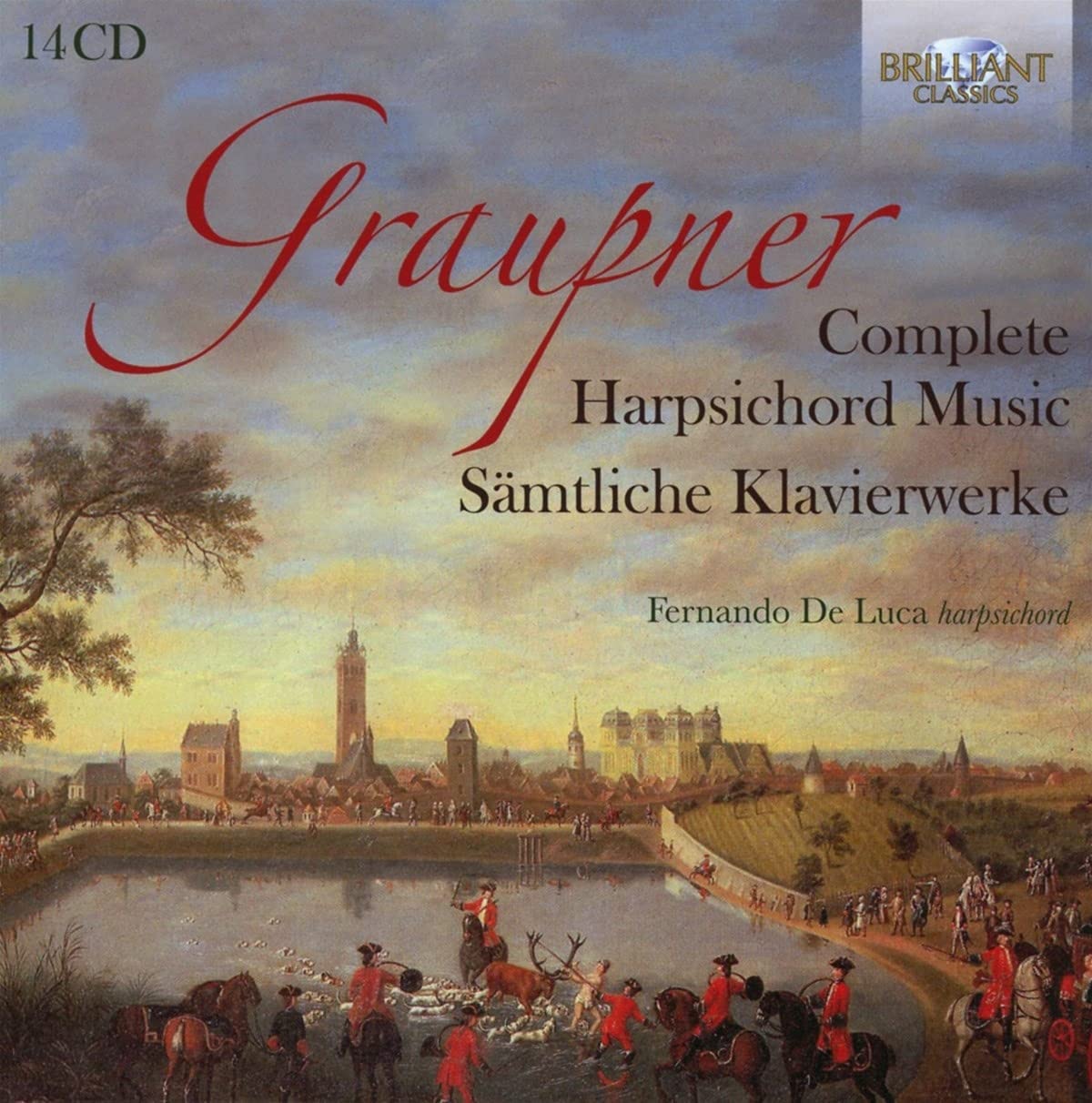Fernando De Luca harpsichord
14 CDs in a card box
Brilliant Classics 96131
Click HERE to buy this on amazon.co.uk
[These sponsored links help the site remain alive and FREE!]
At the famous audition process to choose a new Cantor for Leipzig’s Thomaskirche in 1722-3 Christoph Graupner was second choice (after Telemann) but could not obtain leave from his employer at the court of Hesse-Darmstadt and so made way for J. S. Bach. In that context it is thought-provoking to listen through the nearly fifty partitas which make up almost all of Graupner’s surviving keyboard music, recorded here by Fernando De Luca. The only other pieces here are a single short Prelude and Fugue, and an Aria with one variation. Less than half of the Partitas were published during Graupner’s lifetime, the rest surviving in manuscript in Darmstadt. All are attractive works, rich with musical ideas, but ultimately going over the same ground again and again and tending to rely on repeating trusted formulae. They seem to illustrate Andrew McCredie’s comment in the New Grove article on the composer: ‘working on a modest scale, [Graupner] was regarded more for the originality of his ideas than for their working out’. It is as if Bach continued to churn out French Suites and almost nothing else. Might a move to Leipzig have meant a different outcome for Graupner? We will never know. He was certainly amazingly prolific in Darmstadt, with over fourteen hundred cantatas and lots of other works surviving. Like Telemann, musical ideas flowed freely from his fingers and pen. The most extended of his partitas are a set of twelve named after the months of the year, each with from six to ten movements, headed by Preludes which can take a variety of forms, and continuing with the usual standard dances and various galanterien. In other suites the Allemande fulfils something of the function of an opening prelude.
This 14-CD collection is a monumental enterprise for De Luca who seems to relish such challenges. Together with Marco da Gregorio he runs a website ‘Sala del Cembalo del caro Sassone’ which contains a whole host of recordings of keyboard music by many different composers, all recorded by De Luca. He is clearly used to big projects and able to learn music quickly. His playing is consistent and faithful to the score, though perhaps motivated more by a desire to leave a firmly mainstream account of the works than to let in any sense of playfulness or experimentation. Fast movements can be exciting, particularly some of the Gigues; slower movements can be a bit heavy-handed and would have benefitted from some more subtlety in execution at times, though there are some fine moments and a judicious use of ornamentation on repeats. He plays on two instruments: a copy of a Blanchet (1754) by C. Caponi and copy of a Christian Vater (1738) by F. Ciocca, both of which provide opportunities for variety of registration and are pleasingly recorded. There is only very slight information in the accompanying booklet – movement lists are only found on individual CD covers; a short essay deals only in generalities with nothing much on individual partitas. The numbering follows that of the Graupner Werkverzeichnis (GWV). (Incidentally, GWV online is a mine of information about the composer and his output, editions and performances of this works.) There is much to admire about this recording project, and it is certainly very useful to have all of Graupner’s authenticated keyboard music available in one place. Listeners will want to dip in and out, perhaps taking one partita at a time, admiring both Graupner’s and De Luca’s facility and being rewarded with some attractive music confidently delivered.
Noel O’Regan
